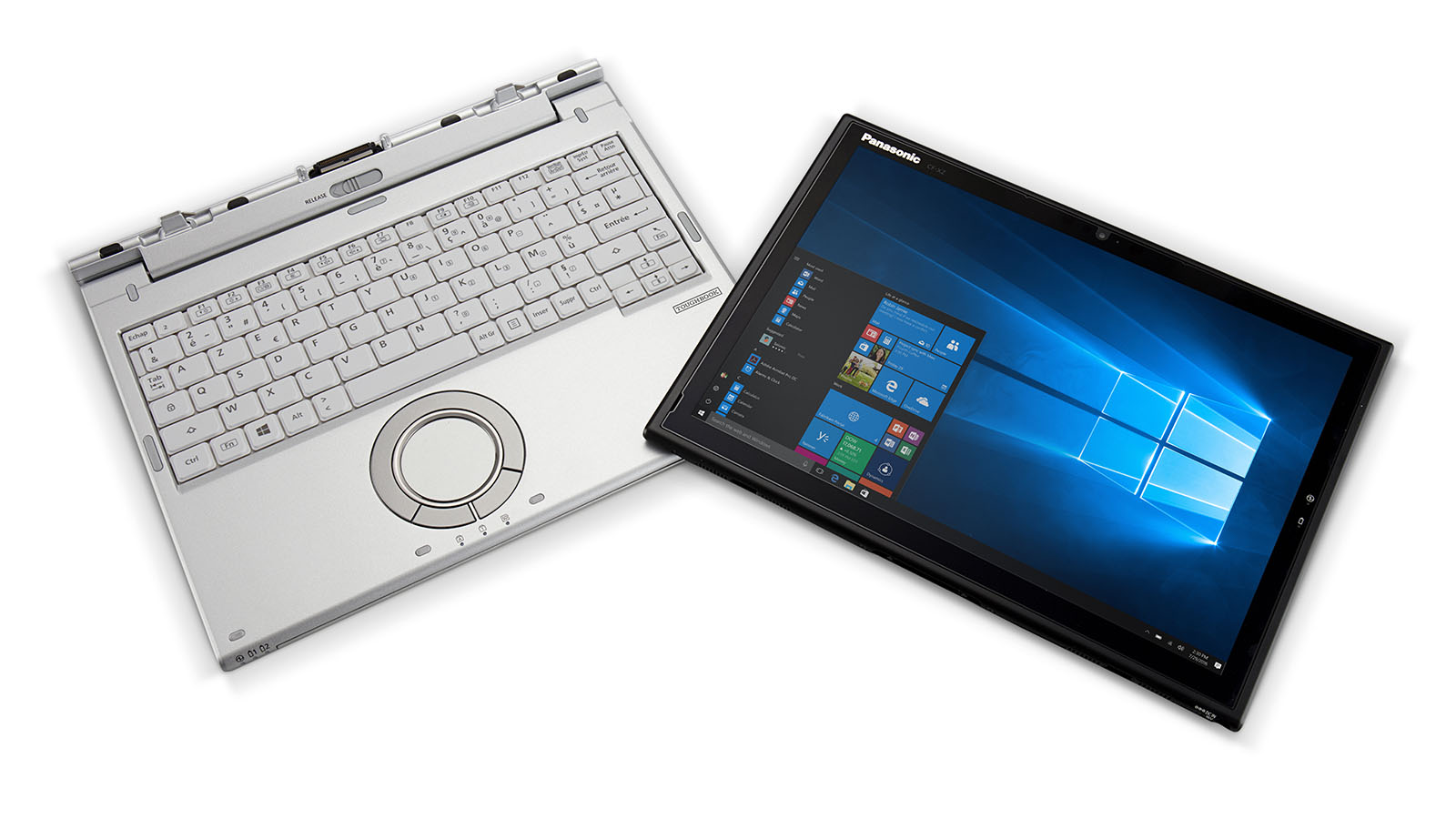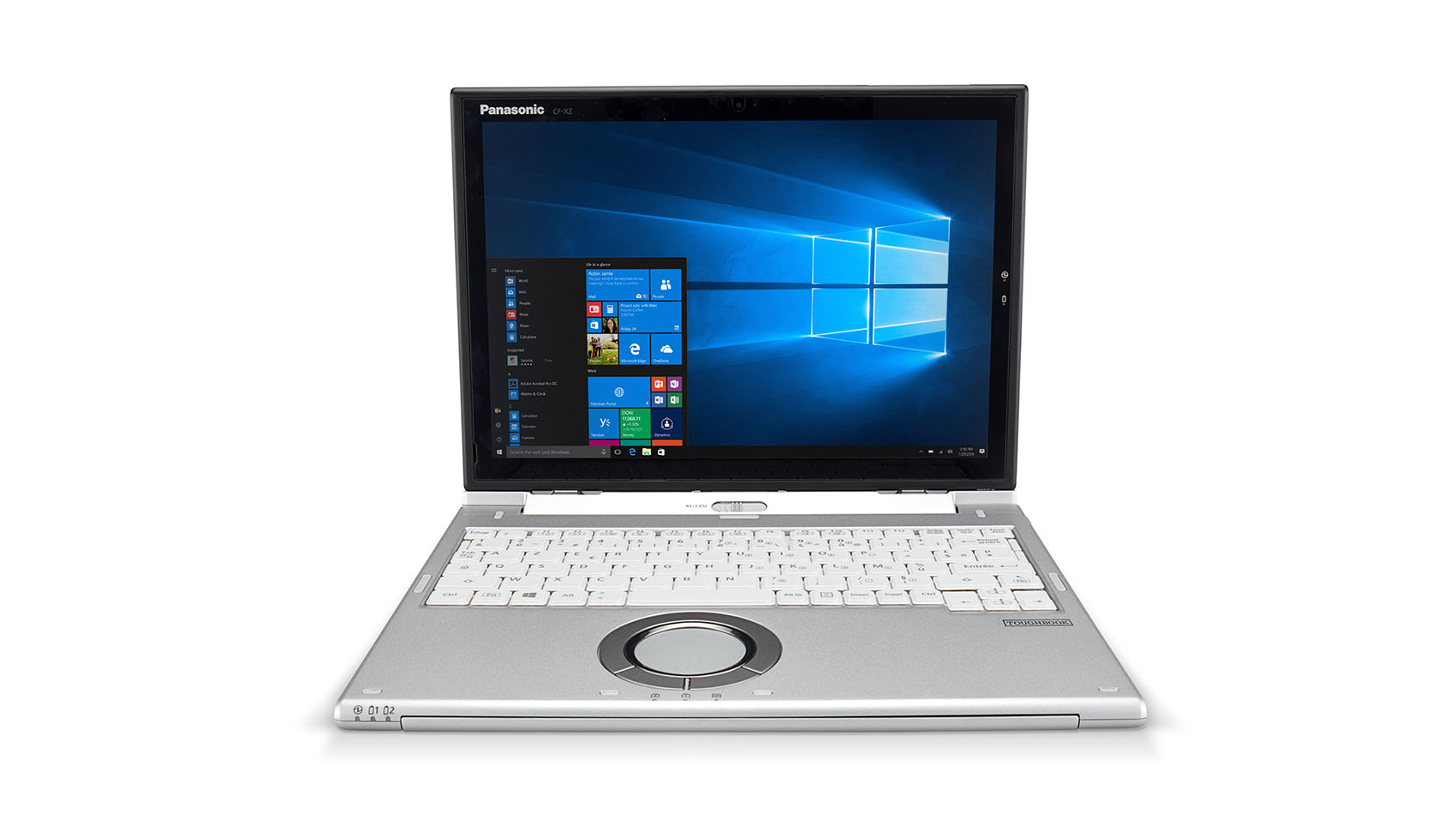TechRadar Verdict
Despite a great processor and speedy storage, the Panasonic CF-XZ6 isn’t the usable device most business users need and expect at this price.
Pros
- +
Kaby Lake power
- +
Rugged and durable
Cons
- -
Gets overly hot
- -
Poorly designed
- -
Expensive
Why you can trust TechRadar
Panasonic has been beavering away for the past few years, focused on the rugged niche for mobile computers, developing its ToughPad and ToughBook ranges. The firm grades its products as ‘Fully Ruggedized’, ‘Semi Ruggedized’ and ‘Business Ruggedized’ based on what levels of abuse they are designed to withstand.
The new ToughBook CF-XZ6 is a hybrid design built to provide a Windows platform in a highly portable package that can handle a few knocks, being pitched as ‘Business Ruggedized’.
But is being able to survive the carelessness of employees a good selling point, and does it justify the extra expense over a conventional laptop design?
The European pricing of this hybrid is around £1,850 when VAT has been added, making this one of the more expensive laptops built around the Intel Core i5-7300U processor.
In the US there are two other CF-XZ6 models available with a slightly different specification. There’s a slightly slower i5-7300U design for $1,863, and a Core i7-7600U model with 16GB of RAM and a 512GB SSD which will set you back an eye-watering $3,912.
As that pricing hints, this is exclusively a business-targeted device which isn’t available through the usual retail channels.

Design
With hybrid PC design, there are two schools of thought. One, epitomized by the Microsoft Surface, is to have a very lightweight keyboard that performs only this single function.
The other, employed by Panasonic in the CF-XZ6, is to make the system more of a laptop, but with the ability to detach the keyboard and convert into a tablet when required.
Choosing this second path brings up the question of what else to include with the keyboard, as well as the issue of how the system will adapt when those features are removed (when the keyboard is detached).

In the CF-XZ6, the keyboard portion adds an extra 5200mAh battery, three Type-A USB ports, VGA and HDMI out, a 10/100/100 Ethernet port and an SD card slot.
With that port selection, the keyboard functions more as a docking station, and the system can happily detach and re-attach without needing a reboot.
A nice (unexpected) touch is that the battery inside the keyboard also detaches, allowing multiple batteries to be hot-swapped. This feature enables the longevity of the device to be substantially extended for those who might struggle to find a power socket on their travels.
Here is the Panasonic Toughbook CF-XZ6 configuration sent to TechRadar Pro for review:
CPU: Intel Core i5-7300U vPro dual-core 2.6GHz
Graphics: Intel HD Graphics 620
RAM: 8GB
Screen: 12-inch QHD (2160 x 1440 pixels) touchscreen
Storage: 256GB SSD
Ports: 3 x USB 3.1 Type-C Gen 2, 1 x USB 3.0 (sleep-and-charge), 1 x HDMI, 1 x VGA, 1 x 10/100/1000 Ethernet, SDXC card slot, headphone/mic jack
Connectivity: 802.11ac Wi-Fi, Bluetooth 4.1
Camera: 2MP IR front camera, 8MP rear camera
Weight: 1.18kg
Size: 288.5 x 223.7 x 22mm (W x D x H)
Battery: 2 x 4-cell lithium-ion (keyboard and tablet)
The battery part of the keyboard is well considered, but a less endearing feature is how cramped the keyboard layout feels. Not to mention the unusably small touchpad that Panasonic placed below it.
The circular touchpad is just 42mm across on a system with a 3:2 ratio screen, making for awkward operation, and inducing the overwhelming urge to use the touchscreen or a mouse almost immediately.
Whereas the keyboard part is a mixed bag, the tablet side of the CF-XZ6 is certainly more elegant. Although the small bezel around the display makes swiping off-screen a real challenge.
Only the left-hand side has any controls on it, though it looks like in a previous (or future) iteration the right-hand side also had more ports than the single headphone jack which is present in the CF-XZ6.
The power input is on the bottom, so you can’t charge the tablet alone while it is attached to the keyboard. And the only USB port on the tablet is a single Type-C connector on the right, alongside the power button and volume rocker.
As Windows tablets go, this one is relatively light at 639g, and it’s reasonably comfortable to hold.
The magnesium frame is built to withstand the machine being dropped, should the owner be moderately careless with it.
Beyond the review model specification, there’s optional 4G LTE connectivity, and Panasonic should consider expanding the internal storage, and the system memory to 16GB.
There isn’t any user access for upgrades, except the batteries mentioned elsewhere.
Mark is an expert on 3D printers, drones and phones. He also covers storage, including SSDs, NAS drives and portable hard drives. He started writing in 1986 and has contributed to MicroMart, PC Format, 3D World, among others.

